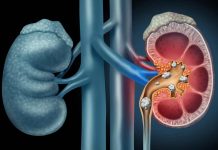
(AscendHealthy)- Trauma is common. Approximately 60% of men and 50% of women will survive a traumatic event, such as assault, violence, disaster, or accident, in their lifetime. Unfortunately, experiencing trauma can have devastating, long-lasting effects. Some are never able to move past the trauma. A psychotherapy treatment called Eye Movement Desensitization and Reprocessing (EMDR) may help.
What Is EMDR?
Originally designed to help alleviate the distress associated with traumatic memories, EMDR therapy has been shown to resolve mental illnesses and symptoms linked to trauma. The therapy was first developed by Francine Shapiro in 1987 after she noticed that eye movements decreased her negative emotions. She later found that eye movements did have a desensitizing effect, but they were not sufficient to alleviate all symptoms. Therefore, she combined eye movement exercises with a cognitive component to develop the treatment.
EMDR Treatments
EMDR therapy consists of eight phases: treatment planning, preparation, assessment, desensitization, installation, body scan, closure, and re-evaluation. After gathering history and explaining the treatment, a provider helps the patient activate the memory that’s being targeted. The patient’s reaction to the memory is assessed and recorded to provide a baseline for assessing the success of the treatment.
During active treatment sessions, the patient is asked to focus on the memory while engaging in eye movements, taps, or tones that serve to desensitize the patient to the memory. This is repeated until the patient says the memory is no longer distressing. The patient’s physical responses to the memory, such as heart rate and respiratory rate, are then measured to make sure the patient is not in distress.
EMDR and Trauma
EMDR is highly effective at treating the symptoms associated with trauma. Studies have shown that EMDR is faster and more effective than trauma-based cognitive behavioral therapy. What’s more, it offers immediate relief. One study showed that nearly 90% of patients had relief after three sessions. After just six sessions, as many as 100% of single-trauma victims and 77% of multiple-trauma victims experienced relief from their symptoms. After eight sessions, 91% of patients are able to achieve prolonged relief.
EMDR therapy has shown very promising results and is recognized as an effective treatment for trauma by the American Psychiatric Association. After only a few sessions, the majority of people experience relief from their PTSD symptoms. However, it’s advisable to complete all eight phases of the treatment protocol. It can take multiple sessions to navigate all phases of the treatment.
~Here’s to Your Healthy Ascension!
Copyright 2023, AscendHealthy.com




















